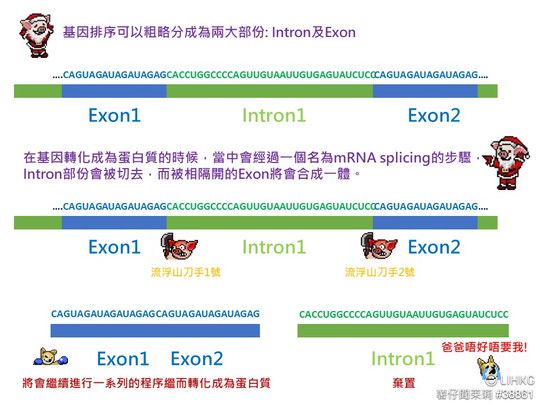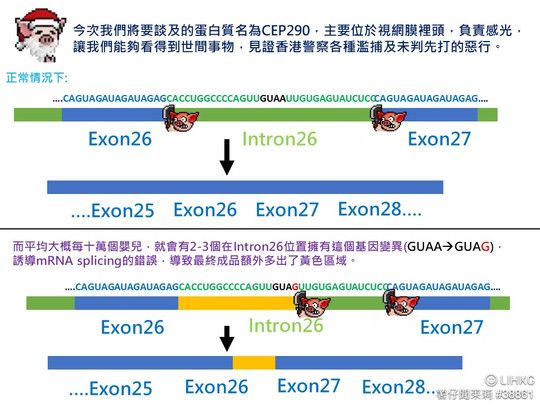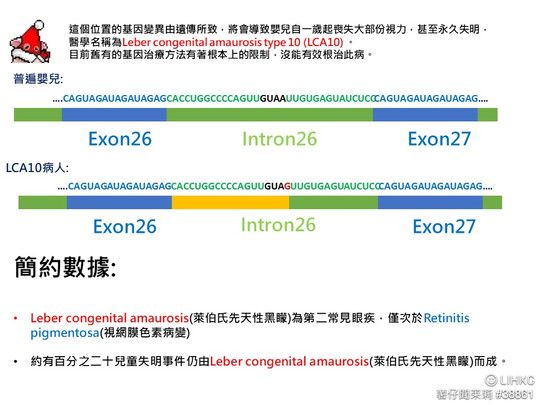Explain in simple language – using CRISPR gene editing technology to treat eye diseases
In terms of medical treatment, CRISPR gene editing technology has been controversial in the outside world, and many of them pointed out that gene editing will involve a series of ethical issues and human rights issues, especially in the forcible gene editing of unthinking embryos. It elicited a particularly huge response.
Under the voices of different support and opposition, CRISPR technology has achieved considerable application breakthroughs in recent days. On March 4, 2020, the United States successfully administered drugs to an eye disease patient in a clinical experiment, as an enlightenment for the medical application of CRISPR technology.
This POST will also use a simple and easy-to-understand method to explain the principles of the application of CRISPR technology through concise text and pictures and texts.
If you are interested in CRISPR technology or want to know a little more, please go to the following in-depth post to read, and the following will also explain on the premise that you have read the previous post.
In-depth understanding of CRISPR gene editing technology
- Shared from LIHKG discussion forum

Figure 1) The genes (or DNA) in our body cells can be roughly divided into two groups, Intron and Exon, and arranged in the way of Intron-Exon-Intron-Exon.
When our cells make proteins based on the DNA arrangement as a raw material, they must go through a process called mRNA splicing. At that time, the areas defined as Introns will be cut open, and the separated Exons will be joined together.
In a metaphorical way, DNA is a fresh chicken, and our cells are a five-star hotel chef who chops up those chicken heads, tails, and introns and discards them, taking only chicken breasts. Spleen tender meat (Exon) is put together on the plate.
Of course, we will also carry out the process of frying, boiling and stewing for those chickens before they can be served on the plate. Like cells, they will continue to go through a series of processes on the connected Exon before they can be converted into protein. But that's not the subject of this Post, so I won't go into that in depth here.

Figure 2) What we will discuss next is a protein called CEP290, whose function is to sense light sources on the surface of the retina, transmit information to the brain and then convert it into the images we see.
Under normal circumstances, the Intron will be cut as shown in the picture, and the Exon will be connected with another Exon.
But on average, for every 100,000 babies, there are two to three babies whose CEP290 gene, located in the 26th Intron position, will have a genetic mutation, and the normal GUAA will become GUAG.
This mutation will cause an error in the mRNA splicing program, mistakenly treating a part of Intron as Exon, as shown in the figure, the final Exon product has the yellow area that should not exist under normal circumstances.
For example, the kidney of a fresh chicken is very similar to chicken, and the five-star chef mistakenly treats a part of the kidney as a serving.

Figure 3) This GUAA located at Intron26 will become a GUAG gene variant that is still inherited, and will cause the baby to lose most of his vision from the age of one, or even become permanently blind. The medical name is Leber congenital amaurosis type 10 (LCA10) .
Leber congenital amaurosis (Leber's congenital amaurosis) is the second most common eye disease after Retinitis pigmentosa (retinitis pigmentosa). Today, about 20% of children's blindness is still caused by Leber congenital amaurosis (Leber's congenital amaurosis). amaurosis).
However, the current old gene therapy methods have fundamental limitations and have not been able to effectively cure the disease...

Figure 4) However, with the birth of CRISPR/Cas9 technology, scientists have found an effective way to cure the disease.
They first put the components needed for Cas9 in a liquid, and then the doctor used a small tube to drip it into the outer layer of the retina through a surgery, and then performed gene editing to remove the mutation.
In theory, because Intron will eventually be cut, as long as the mutated gene located in Intron is removed using CRISPR technology, the patient's cells will be cut intron as usual, and will no longer be confused by the GUAG variant gene. , the final product will be exactly the same as a normal person.
Earlier, because the kidney of fresh chicken is very similar to chicken, the five-star chef mistakenly treated a part of the kidney as a serving dish. Now we simply remove the kidney first, and then hand it over to the five-star chef for cutting. Without the confusion of the psychedelic kidney, the chef can also cut off the tender chicken and cook up the best dishes.
And there is evidence that as long as about 10% of the cells can be edited smoothly, the patient's vision can reach normal visual level!
This operation was successfully performed in the United States for the first time on March 4, 2020! What will be the result, I believe there will be news reports in the next few days!!
Welcome to FOLLOW IG: potatopigtongue, update popular science information from time to time

Like my work? Don't forget to support and clap, let me know that you are with me on the road of creation. Keep this enthusiasm together!
